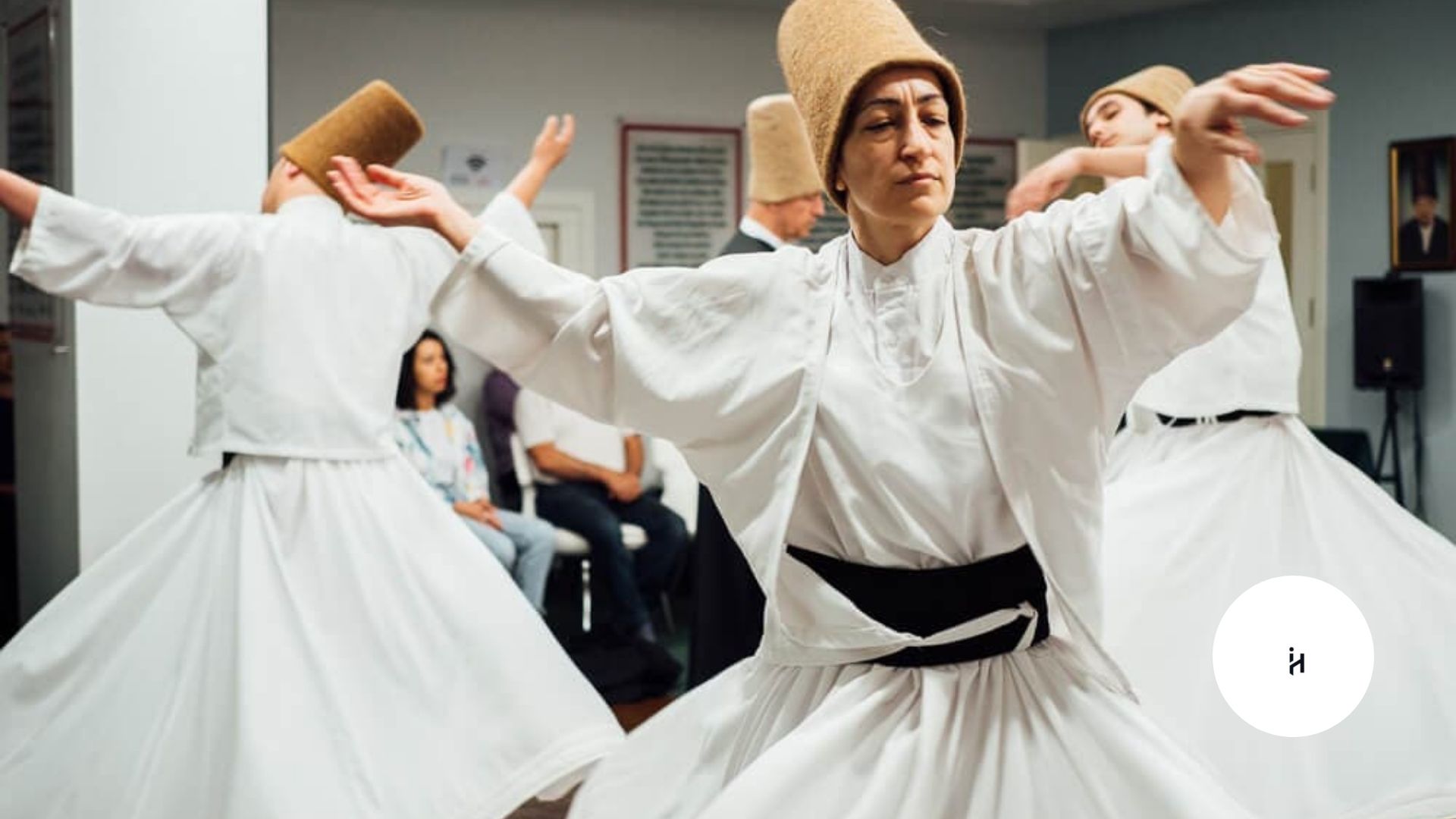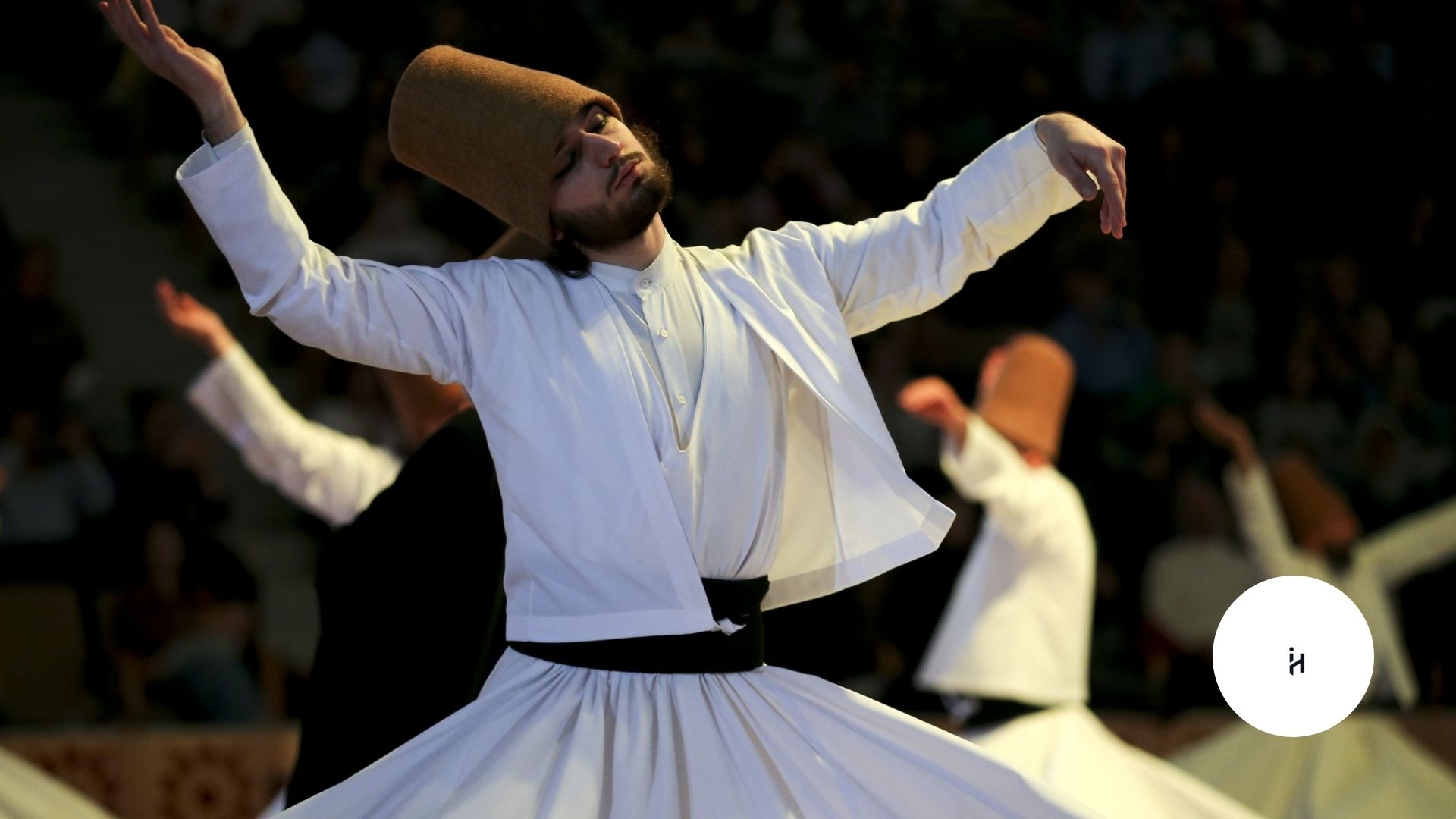Introduction to the Whirling Dervish: A Sacred Dance of Devotion
The Whirling Dervish is not just a performer but a spiritual seeker engaged in a sacred ritual known as the Sema. Originating from the teachings of the 13th-century Sufi mystic Jalaluddin Rumi, the whirling dance is a deeply symbolic expression of divine love and unity. Through the continuous spinning motion, the whirling dervish detaches from worldly concerns and moves closer to God, embodying a spiritual journey from ego to enlightenment.
This mystical ceremony isn’t merely a dance. It’s a form of dhikr (remembrance of God), designed to focus the heart and mind solely on the Divine. The ritual is marked by precise movements, symbolic attire, and an atmosphere of deep reverence.
When people speak of the “whirling dervish,” they’re referencing a figure who bridges art, spirituality, and mysticism in one fluid motion. As the dancer whirls, their right hand reaches to the sky, receiving blessings, while the left hand faces the earth, sharing those blessings with humanity.

The whirling dervish represents a living tradition, still practiced today, particularly in Turkey, where Sufi lodges preserve this powerful ritual. Tourists are often captivated by the grace and hypnotic rhythm of the dance, but for practitioners, it’s an inner pilgrimage—a way to transcend the self and unite with the divine essence.
The Origins of the Whirling Dervish Tradition
The origin of the whirling dervish lies in the Sufi order known as the Mevlevi, founded by the followers of Rumi in the city of Konya, Turkey. After Rumi’s death, his son Sultan Walad and his devoted followers institutionalized his teachings into a spiritual path that included poetry, music, and dance. The whirling dervish emerged as a central figure in this mystical order.
Historically, the ceremony was performed in tekkes (Sufi lodges), with every element of the ritual grounded in symbolism. The dance is not entertainment; it is worship. The term “whirling dervish” itself captures the essence of a seeker spinning in devotion, stripped of ego, and aligned with the divine presence. The dervishes believe that by whirling, they mirror the movement of the universe—from atoms to galaxies—all in constant rotation.
The spread of the Mevlevi Order throughout the Ottoman Empire popularized the whirling dervish across the Islamic world. Over time, it became not only a religious practice but also a cultural symbol of Turkish identity. Though banned temporarily during the early years of the Turkish Republic, the whirling dervish tradition has been revived and protected as a UNESCO Intangible Cultural Heritage.
Spiritual Significance of the Whirling Ritual
For the whirling dervish, the dance is far more than physical motion—it is spiritual transformation. The ritual begins with a prayer and the donning of symbolic garments. The long white gown represents the ego’s shroud; the black cloak symbolizes the tomb; the tall hat signifies the gravestone of the ego. Removing the black cloak marks the dervish’s rebirth into spiritual awakening.
The whirling itself is a form of meditation in motion. As the dervish spins, his focus is on God’s name, letting go of distractions and worldly attachments. Each rotation becomes a silent prayer, a movement towards inner stillness despite external motion. The goal of the whirling dervish is not to impress an audience but to disappear into divine love.
Through repetition and rhythm, the dancer achieves a trance-like state that elevates consciousness. This spiritual ecstasy, known as wajd, is where the ego dissolves, and only the presence of the divine remains. The whirling dervish thus becomes a vessel—empty of self, full of spirit.
Jalaluddin Rumi: The Mastermind Behind the Dervish Dance
The inspiration behind the whirling dervish is none other than Rumi, the Persian poet, theologian, and mystic whose verses continue to move hearts worldwide. Rumi taught that love is the path to divine unity, and the whirling dance is a physical embodiment of this philosophy.
Legend says Rumi began spinning spontaneously in a market in Konya, overwhelmed by divine love. His followers adopted this motion into their spiritual practices, eventually creating the structured Sema ceremony. The whirling dervish, therefore, is not merely a disciple of Sufism but a living expression of Rumi’s teachings.
Rumi’s poetry often describes the soul’s longing for God as a turning or spiraling motion, echoing the dance of the dervish. His line, “Why do you stay in prison when the door is so wide open?” encourages seekers to break free of ego and join in the cosmic dance of existence. The whirling dervish responds to this call by losing himself in the rhythm of love and oneness.
The Sema Ceremony: Structure and Symbolism
The Sema ceremony performed by the whirling dervish follows a precise spiritual structure. It begins with a recitation of the Quran and proceeds through four stages, called “Selams,” each symbolizing a different aspect of the seeker’s journey toward divine truth.
In the first Selam, the dervish acknowledges God’s greatness. In the second, he becomes aware of God’s omnipresence. The third symbolizes ecstatic love, and in the fourth, he returns to serve humanity with compassion. Each whirling dervish maintains inner stillness and outer grace during this sacred journey.

The music accompanying the Sema—featuring the ney (reed flute), kudüm (drum), and other traditional instruments—guides the dervish through his spiritual progression.
The whirling itself mirrors the movement of the universe: the dervish’s pivot foot represents stillness, while the spinning body reflects life’s motion. Every element of the Sema holds deep symbolic meaning, making the whirling dervish not just a dancer, but a spiritual philosopher in motion.
The Whirling Dervish Attire and Its Meaning
A whirling dervish wears specific garments that carry profound symbolism. The white robe (tennure) signifies the ego’s burial shroud, reflecting the death of worldly desires. The black cloak (hırka) represents the grave, and when removed, it signals the soul’s release. The tall brown hat (sikke) is seen as the tombstone of the ego.
The minimalist attire helps the whirling dervish stay focused on the spiritual rather than the superficial. It also enables the fluidity of the spinning motion. Each rotation of the wide skirt during the dance symbolizes the soul’s release and surrender to the divine.
This simplicity in costume contrasts with the deep complexity of the ritual. For the whirling dervish, clothing becomes an extension of devotion, embodying humility, purity, and transformation. Tourists may admire the elegance of the outfit, but practitioners understand that each thread is a tool for spiritual awakening.
Mental and Physical Discipline of the Whirling Dervish
Becoming a whirling dervish requires rigorous training. The physical challenge of spinning continuously without losing balance or consciousness demands exceptional discipline. But more important is the mental and emotional focus required to maintain spiritual intention throughout the dance.
A whirling dervish practices breathing techniques, posture control, and meditation to prepare for the ritual. The spinning itself isn’t about dizziness—it’s about alignment. The dervish learns to center the self so deeply that the body can spin while the mind remains anchored in remembrance.
The training also includes learning about Sufi philosophy, music, and etiquette. It may take years for a student to become a full whirling dervish. This shows that the practice is not simply physical performance—it’s a spiritual lifestyle grounded in humility, devotion, and inner mastery.
The Role of Music in the Whirling Dervish Ritual
Music plays an essential role in guiding the whirling dervish through the Sema ceremony. The ney, a reed flute, produces a haunting sound that symbolizes the soul’s longing for reunion with the Creator. The kudüm drum offers rhythm, while the chanting of divine names steers the spiritual journey.
This musical accompaniment isn’t background noise—it’s a sacred guide. Each note and beat is infused with intention. For the whirling dervish, music creates the emotional and spiritual landscape in which transformation can occur.
Musicians and dancers often rehearse together, forming a deep connection that enhances the ceremony’s spiritual power. The harmony between motion and melody makes the experience holistic, merging body, mind, and soul into one divine offering.
Modern Interpretations and Cultural Relevance
Today, the image of the whirling dervish has transcended its spiritual roots and entered mainstream art and tourism. In places like Istanbul and Konya, ceremonies are performed for audiences from around the world. Though some worry about commercialization, many see it as a chance to share Sufi wisdom globally.
Modern artists, poets, and musicians draw inspiration from the whirling dervish, incorporating its essence into various creative mediums. Documentaries, performances, and books often feature the whirling dervish to illustrate inner peace and divine connection.
Still, true practitioners stress the importance of maintaining the ritual’s sacredness. While modernization has broadened its exposure, the core purpose remains unchanged: for the whirling dervish, it’s a path to spiritual awakening and divine love.
Whirling Dervish in Global Sufism

Although the tradition of the whirling dervish is most associated with Turkey, its influence is felt across the Sufi world. In regions like Pakistan, Iran, and Egypt, various forms of devotional music and movement echo similar intentions: union with the Divine.
In global Sufi practices, the idea of “turning” or “spinning” is metaphorical and literal. The whirling dervish becomes a universal symbol of the soul’s desire to dissolve into divine presence. Workshops and seminars around the world now teach the philosophy and practice of whirling, making it accessible to seekers of all backgrounds.
The universal message of love, tolerance, and surrender makes the whirling dervish a timeless figure. His journey, though rooted in Islamic mysticism, resonates with spiritual seekers from all faiths.
Conclusion: The Timeless Beauty of the Whirling Dervish
In a world filled with noise and distractions, the whirling dervish offers a path of silence, stillness, and connection. His spinning motion is more than performance—it is prayer, poetry, and passion embodied. Rooted in the teachings of Rumi, the whirling dervish continues to remind humanity of the beauty of surrender and the joy of divine love.
The whirling dervish teaches us that transformation doesn’t require grand gestures—sometimes, it just takes a single step inward, followed by a graceful spin towards the light.